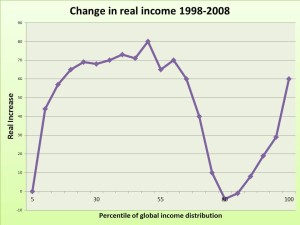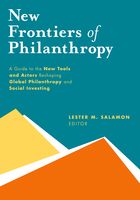Q: Where can you find more than 9,000 philanthropists who took the brave and often complicated step of creating a new grant-making charitable trust (a ‘foundation’ in international terminology)?
A: In Factary’s new New Trust Update Archive.
The new NTU Archive is many things. It’s a simple, fast and efficient way to find trusts and foundations in the UK. It’s a great way of finding out about philanthropists, and it is a history of the last ten years of philanthropy in the UK.
Factary began recording the new wave of philanthropy back in 1993, when we noticed that the Charity Commission for England and Wales was experiencing a boom in trust registrations. We discovered that the registration documents for charities – which are in the public domain – contained information that allowed fundraisers to get a clearer idea of what the activities of new trusts, and who was behind them. This was not, at the start, an easy process. We had to take the train to Taunton (where the Charity Commission keeps part of its archive) and request, one by one, the registration documents for these new charities. We then had to go through each document by hand to pick out the charities that looked like they might be, or might become, grant-makers, and start the process of research.
The second part of this process has not varied much over the years – we still carry out detailed research on each trust, contacting trust administrators and aiming to establish who is behind the trust, what their interests are, and what they hope to do.
The Factary team moves fast on that research, and subscribers to New Trust Update (we limit the number of subscribers to 100) rely on us to be the first to hear about new grant-makers.
The result is a rich database of more than 2,500 trusts with interests in arts, rights, women, older people, animals, the environment… the whole range of charitable activity. Users of the NTU Archive can search the entire data set using combinations of codes (for example, ‘Education and Training’) and keywords, to find trusts that were created with those interests.
Users can research trustees by name. There are more than 9,000 trustees listed here, so this is a rich database on individual philanthropy – people who are concerned enough about a social or environmental issues to create a foundation or to join the board of a new foundation. Information on philanthropy in the UK – with the honourable exception of Factary Phi – is hard to find and this data, linking people to their philanthropic interests is invaluable to the non-profit sector.
Factary’s Will Whitefield emphasises that this is a record of the moment that the trust was created. ‘It’s like a birth photo of the trust. When we research the trust it is around a month or two old; so the trustees, objectives and finances are from those early days.’ But that in itself is valuable, because it allows a researcher to see who the baby was, and how it grew up.
There are plenty of examples of this. The Bernard Sunley Charitable Foundation that we reported in June 2005 topped £4m in income in March 2015, double its spend at start-up. The Schroder Foundation, reported by us in March 2005 and created with a £10 deposit, had grown to £2.2m by April 2015 – that’s 22 million percent growth if you do the maths.
But tracking less spectacular growth is also relevant. For example, a search using the keyword Africa throws up 167 trusts. Pick an early one, such as the Egmont Trust and compare it with the Charity Commission’s current record for the foundation you can see that founding trustees Clare Evans (who had worked with ActionAid in the 1990s) and Jeremy Evans are still in place, but that three others have joined (and two left) over the ten years since we reported its registration in our April 2005 edition.
In here you will find the origins of venture philanthropy and impact investment. The Private Equity Foundation – we reported on it in November 2006 – is in there as is the moment in 2013 when it merged with Impetus to form Impetus Private Equity Foundation. The Apax Foundation – we reported its registration in March 2006 – is there too.
Finally, there is all the great inventiveness of philanthropy here. There are foundations with names based on Beatles’ lyrics (“Love Is All We Need”, registered and reported in 2007), those with hopeful names (“The Making a Difference Foundation,” “Heaven Can Wait” or “The GoodFund”) and foundations from the UK’s vast pool of celebrities, from Gordan Ramsay, chef to the late Dan Maskell, tennis champion.
Factary’s new NTU Archive is an open book on the growth of organised philanthropy in the UK. For more information just get in touch with Nicola Williams.



